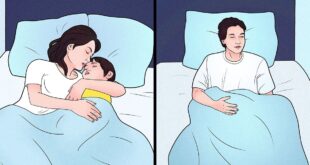Textile printing has undergone significant innovation in recent years, with DIY screen printing and block printing emerging as prominent trends in the industry. These techniques offer a fresh and creative approach to designing and customizing textiles, allowing individuals to express their unique style and unleash their creativity.
This article explores the rise of screen printing in textile design and delves into the versatility of block printing, while also providing insights into the tools and materials required for DIY textile printing.
Screen printing has gained popularity in the world of textile design due to its versatility and ability to produce intricate and vibrant designs. This technique involves using a mesh screen to transfer ink onto fabric, creating precise and detailed patterns. With the advancement of technology, DIY screen printing has become accessible to individuals, allowing them to experiment with different colors, textures, and designs on various types of textiles. This trend has opened up new possibilities for innovation in textile design, empowering individuals to create their own unique pieces and stand out from the crowd.
On the other hand, block printing offers a more traditional approach to textile design, where a carved block is used to transfer ink onto fabric. This technique allows for the creation of repetitive patterns and motifs, making it ideal for producing intricate and symmetrical designs. Block printing offers a hands-on experience, allowing individuals to engage with the printing process and add their personal touch to their creations. Additionally, it provides an opportunity for sustainability in textile production, as it can be done using eco-friendly materials and techniques.
The combination of screen printing and block printing trends in textile design has sparked a wave of innovation and creativity, offering individuals the chance to explore their artistic abilities and create truly unique and personalized textiles.
The Rise of Screen Printing in Textile Design
Screen printing has experienced a significant surge in popularity within the field of textile design. This technique involves transferring ink onto fabric through a mesh screen stencil, creating vibrant and durable prints.
One reason for its rise in popularity is its versatility. Screen printing allows for the reproduction of intricate designs with high precision, making it ideal for creating detailed patterns and images on textiles. Additionally, it offers a wide range of color options, enabling designers to experiment with various hues and shades to achieve their desired aesthetic.
Furthermore, the DIY aspect of screen printing has contributed to its growing popularity. With the availability of affordable screen printing kits and tutorials online, individuals are now able to try their hand at this technique in the comfort of their own homes. This accessibility has opened up opportunities for aspiring textile designers to explore their creativity and experiment with different printing methods.
Moreover, the rise of social media platforms has provided a platform for these DIY screen printers to showcase their work, inspiring others to join the trend and fostering a sense of community among textile enthusiasts.
Overall, the surge in popularity of screen printing in textile design can be attributed to its versatility, accessibility, and the sense of creativity and community it fosters.
Exploring the Versatility of Block Printing
Utilizing handmade stamps, artists can create intricate and diverse patterns on various surfaces, showcasing the limitless possibilities of block printing.
Block printing is a traditional method of textile printing that involves carving a design onto a block of material, such as wood or linoleum, and then applying ink or dye to the raised surface of the block. This technique allows artists to transfer their designs onto fabric, paper, or other materials, resulting in unique and visually striking patterns.
One of the key advantages of block printing is its versatility. Artists can experiment with different types of blocks, inks, and surfaces to achieve a wide range of effects. For example, wooden blocks are commonly used for larger, bold designs, while linoleum blocks are preferred for intricate and detailed patterns. The choice of ink also plays a crucial role in the final outcome, with artists opting for various types of dyes and pigments to achieve different colors and textures.
Block printing offers artists the freedom to create customized designs that reflect their unique artistic vision. Unlike screen printing, which often requires complex equipment and processes, block printing can be done with minimal tools and materials, making it accessible to a wider range of artists. Additionally, block printing allows for a more hands-on approach, as artists directly carve and apply the ink themselves, resulting in a more intimate connection between the artist and the final product.
Block printing is a versatile and creative technique that allows artists to unleash their imagination and create intricate patterns on various surfaces. Its simplicity and accessibility make it an attractive option for artists looking to explore different printing methods.
With its ability to produce visually striking and unique designs, block printing continues to captivate artists and inspire innovation in the realm of textile printing.
Tools and Materials for DIY Textile Printing
One essential aspect of exploring the art of DIY textile printing involves understanding the range of tools and materials required for this creative endeavor. These tools and materials play a crucial role in achieving high-quality and professional-looking prints.
One of the most common tools used in DIY textile printing is a screen printing frame, which holds the screen stencil in place during the printing process. These frames are usually made of wood or aluminum and come in various sizes to accommodate different printing needs.
Another important tool is a squeegee, which is used to push the ink through the screen and onto the fabric. Squeegees are available in different sizes and shapes, allowing for precise control over the printing process.
Additionally, textile printing requires specific types of inks that are designed to adhere to fabric and withstand washing. These inks come in a variety of colors and formulations, including water-based, oil-based, and discharge inks. Each type of ink has its own unique properties and is suitable for different types of fabrics and printing techniques.
Finally, different types of fabric may require specific tools and materials to achieve optimal results. For example, printing on cotton fabric may require pre-treating the fabric with a fixative to ensure the ink adheres properly.
Understanding the tools and materials involved in DIY textile printing is essential for achieving professional and innovative results.
In the world of DIY textile printing, there is a constant quest for innovation and experimentation. This desire for innovation is reflected in the wide range of tools and materials available to textile printers.
One innovative tool that has gained popularity in recent years is the digital fabric printer. This machine allows artists and designers to print directly onto fabric using digital images and designs. With the ability to print complex and intricate patterns, digital fabric printing opens up new possibilities for creativity and customization.
Another innovative material that has emerged in the world of DIY textile printing is eco-friendly and sustainable inks. These inks are made from natural and non-toxic ingredients, reducing the environmental impact of the printing process. They offer a safer and more sustainable alternative to traditional inks, without compromising on quality or color vibrancy.
Additionally, advancements in technology have led to the development of heat transfer materials, which allow for easy and precise application of designs onto fabric. These materials come in various forms, such as vinyl, flock, and foil, and can be used to create unique and eye-catching prints.
As DIY textile printing continues to evolve, so too will the tools and materials available, providing endless opportunities for innovation and creative expression.
Unleashing Your Creativity: Designing Unique Patterns
To fully explore the realm of creative possibilities, it is essential to delve into the process of designing unique and captivating patterns in DIY textile printing. Designing patterns allows individuals to express their creativity and showcase their personal style.
Whether it’s abstract shapes, intricate floral designs, or geometric patterns, the possibilities are endless. By designing unique patterns, individuals can create textiles that are one-of-a-kind and truly stand out.
When designing patterns for textile printing, it is crucial to consider the scale, color, and repetition of the design. The scale of the pattern determines how it will appear on the fabric, and it is important to ensure that it is suitable for the intended purpose. Colors play a significant role in the overall aesthetic of the design, and choosing the right color palette can greatly enhance the visual impact of the pattern. Additionally, repetition is key in creating visually appealing patterns. Whether it’s through symmetrical or asymmetrical repetition, the repetition of elements in the design adds a sense of rhythm and harmony to the textile.
Furthermore, incorporating different techniques and styles can elevate the uniqueness of the pattern. Experimenting with different printing techniques, such as block printing or screen printing, can add texture and depth to the design. Additionally, combining different styles, such as traditional and contemporary, can create a fusion that is visually intriguing. The key is to push the boundaries of creativity and explore new possibilities in order to design patterns that are truly innovative and captivating.
Designing unique patterns in DIY textile printing allows individuals to express their creativity and showcase their personal style. By considering elements such as scale, color, repetition, and incorporating different techniques and styles, individuals can create textiles that are visually appealing and one-of-a-kind.
The process of designing patterns opens up a world of creative possibilities and allows for innovation in the realm of textile printing.
Conclusion
In conclusion, the rise of screen printing in textile design has revolutionized the industry by offering a versatile and efficient method for creating vibrant and intricate patterns. This technique allows designers to achieve high levels of detail and precision, resulting in visually stunning textiles.
Additionally, block printing has also gained popularity for its unique and handmade appeal. It offers designers the opportunity to create one-of-a-kind prints that showcase their artistic skills and creativity.
To engage in DIY textile printing, one must acquire the necessary tools and materials. Screen printing requires a screen, squeegee, and fabric ink, while block printing necessitates a block, carving tools, and printing ink. These tools enable individuals to unleash their creativity and design unique patterns that reflect their personal style and vision.
Whether it be through screen printing or block printing, the world of textile design is open to endless possibilities and innovation.
In summary, the advent of screen printing and block printing has transformed the textile design industry by offering versatile and creative methods for producing unique patterns. These techniques allow designers to achieve intricate and detailed designs, resulting in visually stunning textiles. With the right tools and materials, individuals can engage in DIY textile printing and unleash their creativity by designing their own patterns.
The world of textile design is constantly evolving, and these printing innovations are driving forward the industry’s growth and innovation.
 printablelabelstemplate
printablelabelstemplate
